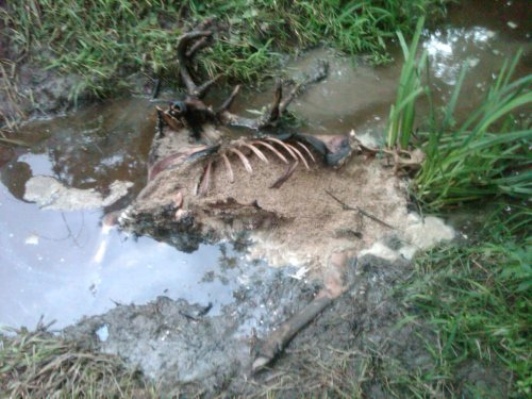LAST UPDATED: May 1st, 2015
Whitetail deer dying from the viral infection Epizootic Hemorrhagic Disease (EHD) is not an uncommon occurrence. However, when the cases are all concentrated near the largest city in the U.S. it can cause greater concern. Simply put – a greater population of people implies a greater concentration of hunters. The Press Release below was released in the state of New York last week with less than five weeks to go before much of the states bow season opens.
New York City area hunters please be advised. Although EHD cannot be transmitted to humans, deer that become infected can be stricken by a second infection that may be possible to transmit through the consumption of afflicted animals.
The New York State Department of Environmental Conservation (DEC) has confirmed that approximately 100 white-tailed deer found dead in the Town of Clarkstown, Rockland County, over the last two weeks were killed by Epizootic Hemorrhagic Disease (EHD). EHD is a viral disease of white-tailed deer that is transmitted by the biting midge in the family Culicoides. The EHD virus does not infect humans and humans are not at risk by being bitten by the infected midge also known as a no-see-um or punkie.
DEC wildlife biologists collected a sampling of deer carcasses in Rockland County and submitted them to the Fish and Wildlife Health Unit for necropsy. Tissue samples were then sent to the Animal Health Diagnostic Center at Cornell University and the National Veterinary Services Laboratory where the diagnosis of EHD was identified.
Deer afflicted with EHD often seek water.
The EHD virus was last confirmed in New York in 2007 in Albany and Niagara Counties. EHD outbreaks are most common in the late summer and early fall when the midges are abundant. The symptoms of EHD include fever, small hemorrhages or bruises in the mouth and nose, swelling of the head, neck, tongue and lips. A deer infected with EHD may appear lame or dehydrated. Frequently, infected deer will seek out water sources and many succumb near a water source. An infected deer may die within 1-3 days after being bitten by the midge or the disease may progress more slowly over weeks or months. There is no treatment and no means of prevention for EHD. The dead deer do not serve as a source of infection for other animals.
EHD outbreaks do not have a significant impact on deer populations. Generally, EHD outbreaks occur in a specific geographic area and about half of the EHD infected deer may die in an outbreak. In the North, the first hard frost kills the midges that transmit the disease and the EHD outbreak ends.
Hunters should not handle or eat any deer that appears sick or acts strangely. DEC will continue to monitor the situation. Sightings of sick or dying deer should be reported to the nearest DEC Regional Office or to an Environmental Conservation Officer.






